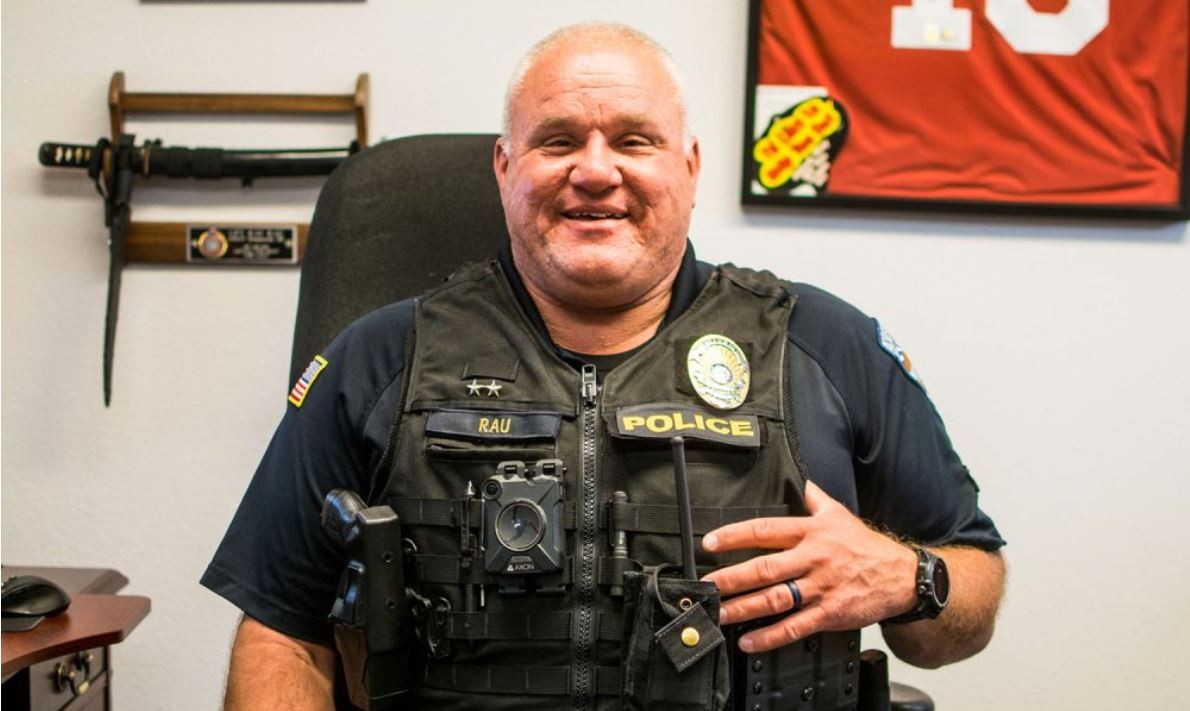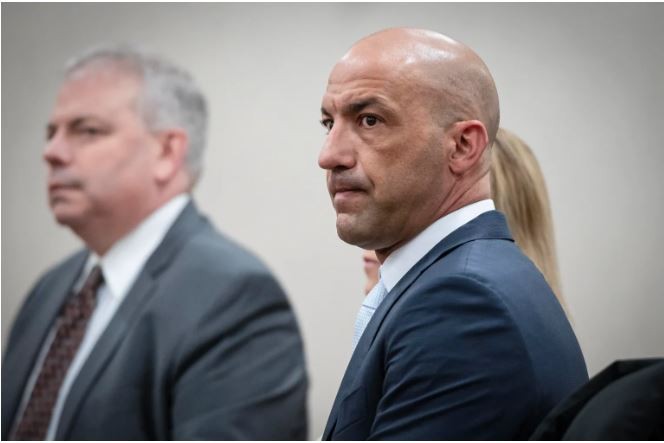DNA: It's not just for homicides anymore It's solving burglaries elsewhere,
The Houston Chronicle
BYLINE: By JAMES PINKERTON, HOUSTON CHRONICLE,
Denver, CO
but HPD can't afford it, Hurtt says DNA: 'It's a resource issue'
DNA IN DENVER
Denver authorities have used DNA evidence to tie hundreds of career criminals to burglaries and other non-violent crimes.
Among them:
Anthony Wright, 24, was arrested after police found his DNA on an iced-tea can outside a burglarized home. Police found merchandise taken in the burglary at a local pawn shop, where Wright pawned them using his real name. He is serving a 12-year prison sentence.
Rodney Stearns, 53, defecated in a burglarized home and police found his DNA on hand towels he used in the bathroom. He is serving two eight-year prison sentences.
Roilen Ivester was placed on five years probation after his saliva was found on a tuna fish sandwich he bit into in the kitchen of a home that was broken into.
David Cropper, 40, was convicted after his DNA was found in the hair of a comb left at a burglary scene. He is serving a 30-year sentence.
David L. Weller, 50, and his wife, Dina Weller, 44, are serving 36-year prison sentences after their DNA was found on a cigarette butt discovered in a home they burglarized.
Source: Denver law enforcement authorities
A cigarette butt caught the attention of Denver detectives investigating the burglary at the home of non-smokers, and the police crime lab quickly matched DNA from saliva to a prolific husband-and-wife crime team.
The couple is among more than 150 burglars nabbed in Denver by a DNA project launched with a $500,000 Justice Department grant that trained police in DNA collection techniques, hired a prosecutor and an analyst.
Houston is experiencing a 4.4 percent increase in burglaries this year - with 21,212 break-ins through September. Yet a similar initiative to use DNA testing to catch burglars and other non-violent criminals languishes on a list of police department projects for which Chief Harold Hurtt said he cannot get funding. The city's understaffed and underfunded crime lab is perhaps still years away from adopting techniques being successfully used in Denver, officials said.
"I'm so frustrated with this whole process," Hurtt said Friday. "We find a problem, we find a solution, and ... everybody says, 'This is important. We have to do it.' However, it doesn't seem to be a priority. And we're not going to be able to do this for free."
It would cost $8 million to upgrade the current HPD crime lab to process DNA evidence from non-violent offenses in addition to violent crimes, Hurtt estimated.
"To tell you quite honestly, it's a resource issue," said Irma Rios, director of the HPD Crime Lab. Processing DNA collected during burglary investigations is a "lower priority. It's going to be months before we get to those - we're going to work the homicides and other violent crimes first."
Caught 2 with 1 butt
Since the Denver DNA project began in 2005, burglaries have dropped by more than 30 percent in the Colorado capital, District Attorney Mitchell Morrissey said.
"We caught two people on the same cigarette butt, and they turned out to be a husband-and-wife habitual burglary team,'' said Morrissey. "When we took them into custody, we reduced the burglary rate in the neighborhood they were working in by 41 percent."
Denver was one of five jurisdictions awarded Justice Department grants to study the idea of using DNA evidence to combat property and non-violent crimes. Justice Department researchers, looking at the results from Denver, Los Angeles, Phoenix, Orange County and Topeka, concluded suspects were five times as likely to be identified through DNA evidence than through fingerprints.
And while DNA analysis has been an effective crime-fighting tool, it rarely is used in Houston to help solve thousands of property crimes. In the last year, the Houston police crime lab received 2,148 requests to test evidence for DNA, but only 25 were related to burglaries, Rios said.
The crime lab, she said, currently is working to process approximately 1,000 DNA samples from active cases, and has a backlog of 3,800 rape kits stored in the HPD property room. The lab is nine employees short of its authorized staffing, and the 20-employee DNA section is short four criminologists and lab technicians, Rios said.
"We are building capacity, as are all labs throughout the nation, but what's happened is as we built capacity the demand has increased," she explained. " ... The DA's office wants DNA evidence, and there's an expectation from jurors that there has to be DNA evidence. They watch CSI."
Harris County District Attorney Pat Lykos said federal funding - even economic stimulus funding - should be used to help Houston clear the backlog of DNA cases and begin testing evidence in property crimes as quickly as the next six months. She advocates setting up temporary quarters in the Medical Center until a regional crime lab can be built.
"It is an issue of money,'' Lykos said. "You have competing interests between getting more police officers on the street, or you're going to fund additional resources in the crime lab. That's a choice that shouldn't have to be made."
Lykos said a friend's stolen pickup truck recently was recovered, and the thief left a "spit cup" on the dashboard with a mixture of tobacco juice and saliva. The officer said the resources were not available to test the residue for DNA.
"Don't you know how frustrating it must be to be a trained officer, and know you have evidence that could convict a criminal, and you can't test it?" Lykos said.
In Denver, prosecutor Morrissey said the DNA burglary project focused on collecting blood or saliva samples and testing them for DNA. But they also were able to extract DNA from samples of urine, skin and semen.
"These guys will do anything in a house," the Denver prosecutor said. " ... We trained our investigators to listen to victims and look for evidence. And we've had a lot of luck with blood on cars that are broken into."
In Colorado, DNA samples are collected from inmates as they arrive to begin prison sentences, ensuring that many of the burglars identified in the project were not first-time offenders.
Saved $25.6 million
"Some of these burglars we caught in this project are good for 200 to 250 burglaries a year," said Morrissey, adding that the city council picked up funding for the DNA burglary unit after the federal grant expired.
"We did a monetary study and in the first two years we saved over $25.6 million in lost property," he said. "We figured we freed up 150 hours of time of each officer on the Denver police department to work on other crimes because we were eight times more likely to bring charges where we had DNA evidence than we were if we didn't."
The only downside?
"We've filed almost 200 cases, and you can count the number of trials on one hand," Morrissey said. "That's been my only disappointment. These guys plead guilty instead of going to trial, and my deputies don't get the (trial) experience."
- - - - - - - - - - - - - - - - - - - - - - - - - - - - - - -
International Association for Property and Evidence
"Law Enforcement Serving the Needs of Law Enforcement"
www.IAPE.org
BYLINE: By JAMES PINKERTON, HOUSTON CHRONICLE,
Denver, CO
but HPD can't afford it, Hurtt says DNA: 'It's a resource issue'
DNA IN DENVER
Denver authorities have used DNA evidence to tie hundreds of career criminals to burglaries and other non-violent crimes.
Among them:
Anthony Wright, 24, was arrested after police found his DNA on an iced-tea can outside a burglarized home. Police found merchandise taken in the burglary at a local pawn shop, where Wright pawned them using his real name. He is serving a 12-year prison sentence.
Rodney Stearns, 53, defecated in a burglarized home and police found his DNA on hand towels he used in the bathroom. He is serving two eight-year prison sentences.
Roilen Ivester was placed on five years probation after his saliva was found on a tuna fish sandwich he bit into in the kitchen of a home that was broken into.
David Cropper, 40, was convicted after his DNA was found in the hair of a comb left at a burglary scene. He is serving a 30-year sentence.
David L. Weller, 50, and his wife, Dina Weller, 44, are serving 36-year prison sentences after their DNA was found on a cigarette butt discovered in a home they burglarized.
Source: Denver law enforcement authorities
A cigarette butt caught the attention of Denver detectives investigating the burglary at the home of non-smokers, and the police crime lab quickly matched DNA from saliva to a prolific husband-and-wife crime team.
The couple is among more than 150 burglars nabbed in Denver by a DNA project launched with a $500,000 Justice Department grant that trained police in DNA collection techniques, hired a prosecutor and an analyst.
Houston is experiencing a 4.4 percent increase in burglaries this year - with 21,212 break-ins through September. Yet a similar initiative to use DNA testing to catch burglars and other non-violent criminals languishes on a list of police department projects for which Chief Harold Hurtt said he cannot get funding. The city's understaffed and underfunded crime lab is perhaps still years away from adopting techniques being successfully used in Denver, officials said.
"I'm so frustrated with this whole process," Hurtt said Friday. "We find a problem, we find a solution, and ... everybody says, 'This is important. We have to do it.' However, it doesn't seem to be a priority. And we're not going to be able to do this for free."
It would cost $8 million to upgrade the current HPD crime lab to process DNA evidence from non-violent offenses in addition to violent crimes, Hurtt estimated.
"To tell you quite honestly, it's a resource issue," said Irma Rios, director of the HPD Crime Lab. Processing DNA collected during burglary investigations is a "lower priority. It's going to be months before we get to those - we're going to work the homicides and other violent crimes first."
Caught 2 with 1 butt
Since the Denver DNA project began in 2005, burglaries have dropped by more than 30 percent in the Colorado capital, District Attorney Mitchell Morrissey said.
"We caught two people on the same cigarette butt, and they turned out to be a husband-and-wife habitual burglary team,'' said Morrissey. "When we took them into custody, we reduced the burglary rate in the neighborhood they were working in by 41 percent."
Denver was one of five jurisdictions awarded Justice Department grants to study the idea of using DNA evidence to combat property and non-violent crimes. Justice Department researchers, looking at the results from Denver, Los Angeles, Phoenix, Orange County and Topeka, concluded suspects were five times as likely to be identified through DNA evidence than through fingerprints.
And while DNA analysis has been an effective crime-fighting tool, it rarely is used in Houston to help solve thousands of property crimes. In the last year, the Houston police crime lab received 2,148 requests to test evidence for DNA, but only 25 were related to burglaries, Rios said.
The crime lab, she said, currently is working to process approximately 1,000 DNA samples from active cases, and has a backlog of 3,800 rape kits stored in the HPD property room. The lab is nine employees short of its authorized staffing, and the 20-employee DNA section is short four criminologists and lab technicians, Rios said.
"We are building capacity, as are all labs throughout the nation, but what's happened is as we built capacity the demand has increased," she explained. " ... The DA's office wants DNA evidence, and there's an expectation from jurors that there has to be DNA evidence. They watch CSI."
Harris County District Attorney Pat Lykos said federal funding - even economic stimulus funding - should be used to help Houston clear the backlog of DNA cases and begin testing evidence in property crimes as quickly as the next six months. She advocates setting up temporary quarters in the Medical Center until a regional crime lab can be built.
"It is an issue of money,'' Lykos said. "You have competing interests between getting more police officers on the street, or you're going to fund additional resources in the crime lab. That's a choice that shouldn't have to be made."
Lykos said a friend's stolen pickup truck recently was recovered, and the thief left a "spit cup" on the dashboard with a mixture of tobacco juice and saliva. The officer said the resources were not available to test the residue for DNA.
"Don't you know how frustrating it must be to be a trained officer, and know you have evidence that could convict a criminal, and you can't test it?" Lykos said.
In Denver, prosecutor Morrissey said the DNA burglary project focused on collecting blood or saliva samples and testing them for DNA. But they also were able to extract DNA from samples of urine, skin and semen.
"These guys will do anything in a house," the Denver prosecutor said. " ... We trained our investigators to listen to victims and look for evidence. And we've had a lot of luck with blood on cars that are broken into."
In Colorado, DNA samples are collected from inmates as they arrive to begin prison sentences, ensuring that many of the burglars identified in the project were not first-time offenders.
Saved $25.6 million
"Some of these burglars we caught in this project are good for 200 to 250 burglaries a year," said Morrissey, adding that the city council picked up funding for the DNA burglary unit after the federal grant expired.
"We did a monetary study and in the first two years we saved over $25.6 million in lost property," he said. "We figured we freed up 150 hours of time of each officer on the Denver police department to work on other crimes because we were eight times more likely to bring charges where we had DNA evidence than we were if we didn't."
The only downside?
"We've filed almost 200 cases, and you can count the number of trials on one hand," Morrissey said. "That's been my only disappointment. These guys plead guilty instead of going to trial, and my deputies don't get the (trial) experience."
- - - - - - - - - - - - - - - - - - - - - - - - - - - - - - -
International Association for Property and Evidence
"Law Enforcement Serving the Needs of Law Enforcement"
www.IAPE.org


